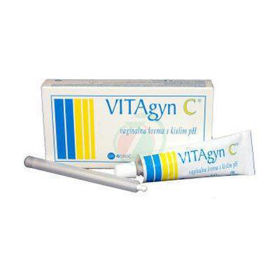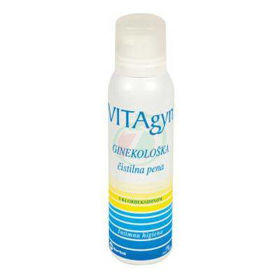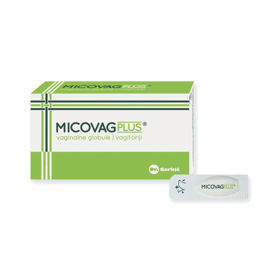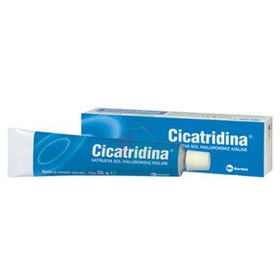Vulvovaginitis is an inflammation or. infection of the external genitalia and vagina.

It is a very common phenomenon that affects women and girls of all ages and has various causes. Where, how and why the paths of women, gynecologist and pharmacist intersect, we talked to the assistant. dr. Mijo Blaganje, Ph.D. med. spec. gynecology. and childbirth.
• What are the most common problems you deal with in gynecological clinics?
Vaginal discharge is the most common symptom that leads women of childbearing age to see a doctor. They are either concerned about the color and amount of discharge or about accompanying phenomena such as foul odor, itching, irritation of the genital mucosa, or pain. Although vaginal discharge varies from woman to woman and its amount, color, and viscosity vary during the menstrual cycle, the associated symptoms indicate inflammation of the vagina and external genitalia that needs treatment. Most women experience this inflammation at least once in their lives
• What is the possibility of visiting a gynecologist for a woman with acute vaginal inflammation, given the lack of gynecologists in Slovenia?
Although the availability of gynecologists in case of serious problems is good in our country, according to our users it is poor due to the nature of vaginal inflammation, which usually occurs suddenly, which is extremely uncomfortable for a woman, but does not pose a serious risk to her health. , properly, help with self-medication and get rid of problems without a visit to the gynecologist. The availability of over-the-counter preparations and medicines in pharmacies and the advice of a pharmacist play an important role in this.
• In your experience, what are the most common mistakes in self-treatment of vaginal inflammation?
The most common causes of inflammation of the vagina and external genitalia are different at different stages of life. Although the use of preparations for balancing the vaginal flora, such as agents for restoring the physiological acidity of the vagina and probiotics, cannot be missed, the most common mistake is excessive use of antifungals, especially in women at a time when yeast infections are not usually expected. Any inflammation of the vagina and external genitalia is not necessarily a fungal infection.
Before puberty, most inflammations are caused by poor hygiene and disappear with an improved hygiene regime. Of the microbes, anaerobic bacteria are present in case of infection, there are no yeast infections. Bacterial vaginosis and fungal inflammation are the most common causes during childbirth. The first is characterized by a distinctly foul odor of vaginal discharge, the second by genital itching and curdled discharge. In the postmenopausal period, symptoms suggestive of inflammation of the external genitalia and vagina are most often due to atrophy and dryness of the mucosa and its irritation. Candida infections are practically non-existent, as is bacterial vaginosis.
• Do you agree that the role of a pharmacist in counseling women is very important, but in which cases is it better to advise a visit to a gynecologist?
The pharmacist has an extremely important role to play in proper counseling, especially since, in addition to intimate hygiene products, vaginal probiotics, antiseptics and agents to restore physiological vaginal acidity, over-the-counter antifungals are also available in pharmacies. In addition to a woman’s age, the leading symptom is the most helpful in counseling. Girls before puberty will be best advised with instructions on proper hygiene, washing with water or a mild intimate hygiene product and using a cooling ointment in case of red genitals. In women of childbearing age, we will find it easiest to orient ourselves by the leading symptom. In case of severe itching or curdled discharge, an antifungal agent will be advised correctly, and in case of extremely foul-smelling discharge, bacterial vaginosis treatment with a local antibiotic will most likely be required. In both cases, an antiseptic for vaginal use or a means to restore the physiological acidity of the vagina and vaginal probiotics will be sufficient, especially for the initial symptoms. These are also important after completion of antifungal or antibiotic treatment to restore the balance of the vaginal flora and prevent recurrence of problems. In postmenopausal women, the most common symptoms are due to atrophy and dryness of the mucosa and its irritation due to estrogen deficiency. Due to poorer blood circulation and different metabolism, the tissue atrophies, the vaginal mucosa becomes thinner, less elastic, the vagina shorter, drier, sexual intercourse can be painful. In addition to vaginal estrogens, preparations for moisturizing the atrophic vaginal mucosa will help them the most.
Of course, it is important that the symptoms associated with pain, discharge of bright colors, systemic signs of infection, bleeding, ulcers of the mucous membranes, symptoms that do not go away with self-medication, and in case of pregnancy, the woman with problems goes to see a doctor.
• What advice do you have for women who come to you several times a year for recurrence of inflammation?
As I mentioned, in preventing recurrences of inflammation, it is important to restore the normal balance of the vaginal flora with probiotics immediately after treatment and after the next menstrual period, when menstrual blood again reduces the acidity of the vaginal environment. In rare cases, prolonged antifungal treatment, repeated antibiotic treatment or targeted detection of the causative agent is required.
• Young women often opt for drastic hygiene measures and cosmetic treatments. Can these too (Brazilian hair removal, vaginal showers, excessive washing) contribute to problems in the intimate area?
While various forms of depilation can cause inflammation of hair follicles and ingrown hairs on the hairy part of the genitals, the use of soaps, baths, vaginal douches and fragrances can disrupt the vaginal microbiome. It contains the largest share of lactobacilli, which maintain the acidic microenvironment of the vagina by metabolizing glycogen to lactic acid, forming a protective biofilm and thus preventing the overgrowth of other microorganisms.












 Facebook
Facebook
 Instagram
Instagram
 info@moja-lekarna.com
info@moja-lekarna.com

